Mars —
On Monday, NASA’s Ingenuity helicopter flew over the surface of Mars. It’s the first time a powered aircraft has made a controlled flight on another planet. The helicopter’s success will make a big difference in how NASA explores space in the future.
NASA’s Ingenuity helicopter came to Mars along with NASA’s Perseverance rover as a technology test. There are huge challenges involved in flying a helicopter on the Red Planet, and NASA wanted to see if a helicopter specially designed for Mars – Ingenuity – could possibly work.
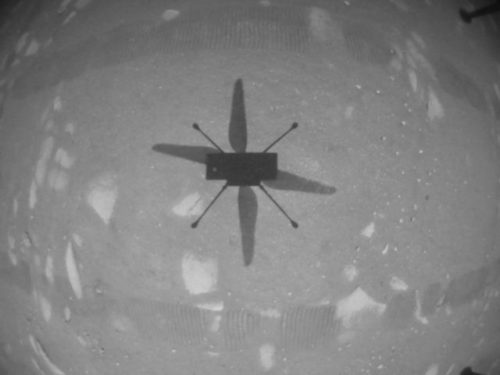
(Source: NASA.)
It turns out that it does work. The helicopter took off and flew to about 10 feet (3 meters) above the surface of the Red Planet. It hovered there for about 30 seconds before returning safely to the ground. The entire flight lasted about 39 seconds in all.
This was not a simple job of taking an Earth helicopter and flying it on Mars. The conditions on Mars are completely different. On Earth, the thickness of our air makes it fairly easy for helicopters to fly.
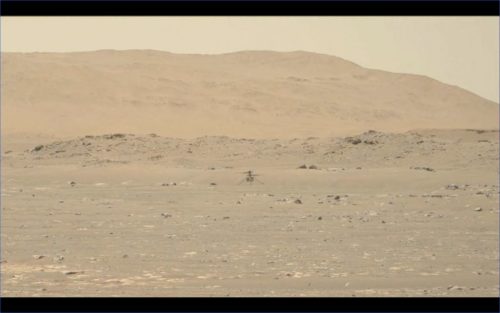
(Source: NASA.)
But the atmosphere on Mars is about 100 times thinner than on Earth. That gives the spinning rotors, or blades, of the helicopter very little to push against. To get around this, NASA had to make several important changes.
For one thing, the Ingenuity’s blades are very light and very long. Even though the body of the helicopter is about the size of a box of tissues, the rotors are about 4 feet (1.2 meters) long.
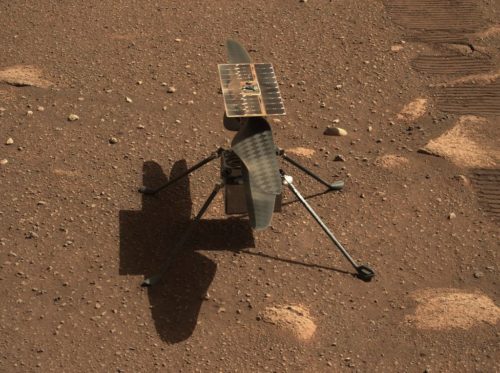
(Source: NASA.)
The rotors also have to spin much faster than an Earth helicopter. On Earth, helicopter blades go around about 400 or 500 times a minute. Ingenuity’s rotors spin around 2,400 times per minute.
The helicopter’s flight couldn’t be managed from Earth because it takes too long for signals to travel between Earth and Mars. Instead, Monday’s flight was controlled completely by the Ingenuity’s computer system.
In fact, because of the position of the satellites that were sending signals back to Earth, NASA’s scientists didn’t know the results of the test until three hours after the flight had finished. When NASA’s scientists learned that the flight had been successful, they broke out into cheers.
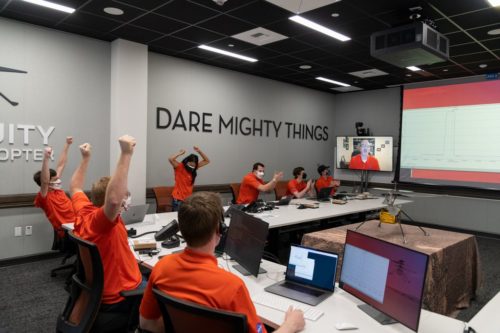
(Source: R. Lannom, NASA.)
Since Ingenuity is designed as a technology test, it won’t be involved in any experiments. But NASA has several more test flights planned for the helicopter. Future test flights will fly higher and also test flying sideways.
The success of Ingenuity will make a huge difference in the way NASA can explore planets in the future. Now instead of driving rovers over difficult and perhaps dangerous landscapes, helicopters may be able to fly off to take pictures and gather information. They could also carry supplies or experiments.
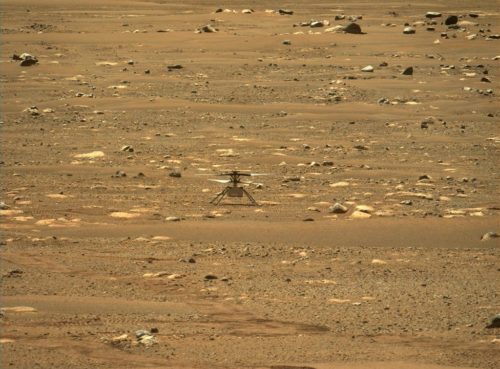
(Source: NASA.)
The helicopter’s flight is such a big deal that it is being compared to the first flight by the Wright brothers in 1903. NASA has named the area where Ingenuity is flying Wright Brothers Field. There is also a small piece of the Wright brothers’ original airplane attached to a cable under Ingenuity’s solar panel.
